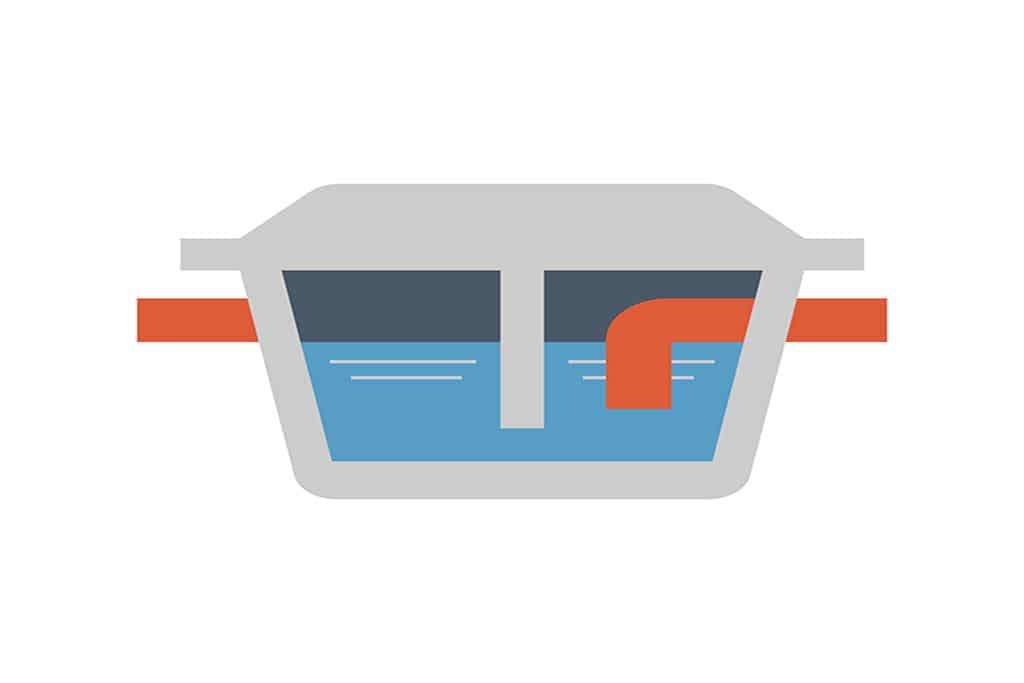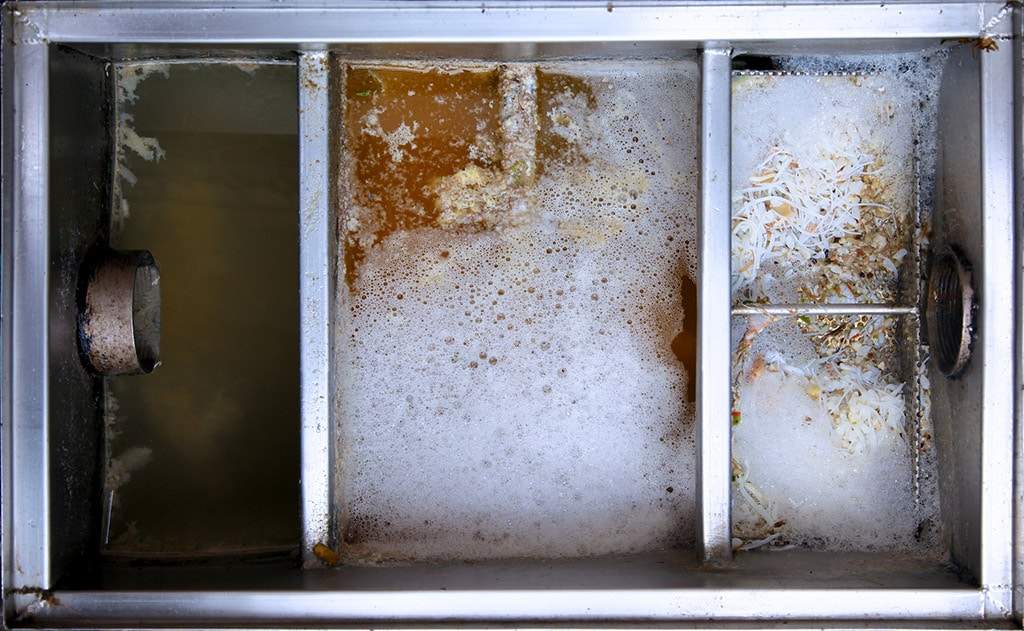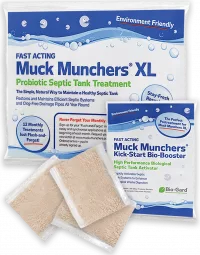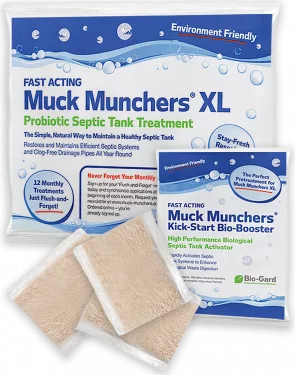What is a Septic Tank Grease Trap?
A septic tank grease trap is a device used to help collect light liquids – such as fats, oils, and grease – on their way through the waste drains. Septic tank systems – at home and in commercial settings – are highly sensitive and rely on bacterial populations to digest organic waste. Without those bacteria, septic tanks simply won’t break down those solids – leaving sludge to build, and crusts to form.
In this guide, we’ll take you through why setting up a grease trap for septic tank systems could give you extra protection against the threat of FOGs (fats, oils and grease) flushing into your septic tank and potentially causing problems.

Why Should Anyone with a Septic Tank Instal a Grease Trap?
Septic tanks are huge repositories for bacteria – which, along with the enzymes they produce, eat through and break down organic waste that would otherwise be impossible to soak through into the surrounding local soil. By flushing through too much fat, oil and grease regularly, your septic tank is at risk of getting clogged, which at the same time will start to deprive helpful bacteria in your system.
Septic tank grease traps are available for home use, though they are typically recommended for use where grease waste is particularly high. Typically this includes hotels, pubs, restaurants and B&B’s. These settings provide meals for larger numbers of people every day and are, therefore, likely to create more fat and grease than an average household.
In fact, there are UK laws and statutes that hold leisure and hospitality businesses accountable for removing grease and associated waste responsibly!
A grease trap will effectively remove FOG waste deposits from the septic disposal equation. This means there is less risk of tank blockages and sub-optimum bacterial digestion. Traps prove invaluable for commercial septic tank users – as constant blockages otherwise impact day-to-day operations and may even result in unnecessary pump-out costs.
Benefits of Grease Traps for a Septic Tank
While it’s always a good idea to simply reduce the level of grease, oil and other light liquid waste you dispose of in your septic tank, grease traps can make your life easier in many different ways. Here are a few benefits to consider.
Reduce Clogged and Blocked Drains – and Protect Your Soakaway
FOGs are notorious for helping to add to thick clogs and surface scum in your septic tank. By removing these liquids from your septic system completely, you can reduce the number of times your tank clogs during its lifetime.
A grease trap for your septic tank will also protect your soakaway. Undigested waste can seriously affect your tank’s drainage potential – and you need a hard-working soakaway to continue draining wastewater safely into the wider environment. Fixing a soakaway, if seriously damaged, is never simple – and it will be very costly, too.
If your septic tank suffers from too many clogs and blocks over the years, you may end up having to reinstall your soakaway system completely.
Environmental Benefits
Grease traps are fantastic for the environment. Septic tanks and sewage treatment systems that clog up with FOGs are at risk of spilling harmful waste into the wider ecosystem – therefore spoiling habitats, killing plant life, and potentially creating a local health hazard.
By installing a grease trap, there’s little chance of FOGs ever reaching local soil. What is good for your tank, is always going to be good for the local ecosystem.
Cost
The more your septic tank backs up, the more attention you will need to give it. A septic soakaway that suffers from frequent heavy clogging may need replacing. At the very least, you may need someone to inspect your system and perhaps pump out any sludge and backed-up waste clogging the tank, drains and soakaway.
As you may imagine, fixing these issues can cost a lot of money. Pumping out is expensive and many septic tank owners end up having to call for pump trucks unnecessarily. By fitting a grease trap and regularly adding microbes to your tank (such as Muck Munchers), you can reduce the amount you pay for septic tank maintenance.
Do You Need to Empty a Grease Trap and How Often?

Grease trap emptying and cleaning frequency will vary depending on the FOGs you discharge into your septic tank. For example, a restaurant that’s draining greasy waste for scores of people every day will likely need to empty their traps weekly.
It’s also worth considering the type of trap you set up, too. Not all septic tank grease traps are the same size, shape and standard. Therefore, it pays to look carefully at the model you buy and to consult your manufacturer for advice if unsure.
You don’t have to rely on a grease trap alone, of course, to help rid your septic tank of FOGs. You can simply use Digesta Waste Trap and Drain Cleaner regularly to reduce at source. Adopting these habits won’t just reduce FOGs – they will help to reduce your need to clean and empty traps, too.
What Size Domestic Grease Trap Do You Need?
Choosing the best size of domestic grease trap for your septic tank will, again, vary on your needs. Larger grease traps will need to be set up externally, outside the home, while smaller models will fit easily underneath your sink. If you aren’t likely to produce too much waste regularly, you can still benefit from fitting a smaller trap unit in your kitchen.
Some grease trap fitters will recommend that you calculate your expected drain flow rate. This will normally require you to measure the size of your sink.
Of course, there are other considerations to keep in mind – for example, if you have a dishwasher and/or washing machine that’s likely to add to the load. A leading manufacturer or installer of grease traps will help you find the best model.
When it comes to costs, you are likely to expect a 40-litre domestic grease trap to cost between £500 to £600. That’s inclusive of VAT, and before installation costs. However, consider it as an investment – you’ll likely save hundreds over the years in pumping and maintenance costs.
In Summary
It’s not always necessary to set up a grease trap for a septic tank system, but the technology can prove extremely useful in reducing blockages and long-term maintenance costs.
We highly recommend you use Muck Munchers regularly alongside a septic tank grease trap to keep your bacteria populations happy and healthy. Don’t forget, too, that you can use Digesta Waste Trap and Drain Cleaner to help break down FOG. Regardless of whether you run a restaurant, a pub, or simply a large and hungry household, cracking down on FOG is a must for your septic tank.










